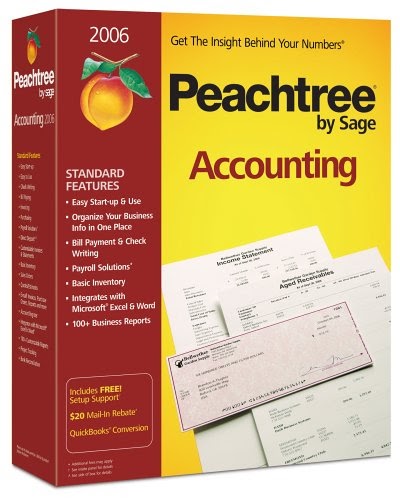Sage Peachtree 2011 Download
Join us for a detailed look at questions asked by members of the Business-Software.com Community. Today’s question comes from Charlotte D., of Roselle, Ill., who asked, “Is Peachtree a better product than QuickBooks?” The QuickBooks vs. Peachtree (now Sage 50) question is about as common as any that we see here at Business-Software.com.
Both time-tested products are hugely successful in the small business accounting segment (a mind-boggling 90% market share for QuickBooks according to some sources), despite the variety of products available outside these two major vendors. So what is it that sets them apart? Is one “better” than the other? The short answer to that last question is “no.” As is usually the case with business software, it’s rare for one product to be unequivocally better than the next. It comes down to which product best meets the specific needs of the individual business, whether it’s their processes, IT infrastructure, existing software portfolio, or even personal preference. Peachtree and QuickBooks are no different. Each has its strengths.
Remember, installing Peachtree by Sage Peachtree Complete Accounting 2011 requires Windows® XP or Windows Vista®. Sabbat A History Of A Time To Come Raritan. You also need to have 'Microsoft®.NET Framework 3.5 Service Pack 1' installed in your computer prior to installing Peachtree. If you do not have the required.NET Framework, you can download it.
So it’s up to the user to evaluate her requirements and select the option that fits best. Feature Comparison Not surprisingly, both Sage 50 and QuickBooks Pro offer essential double-entry accounting capabilities, including accounts receivable, accounts payable and general ledger. QuickBooks offers easy invoicing via its Collections Center, including batch invoicing, which enables users to apply a single invoice to all members of a group. If you spend a lot of time online you’ll enjoy QuickBooks’ integration with e-mail services like Gmail and Yahoo, as well as its integration with online banking. Additionally, QuickBooks provides industry-specific reporting templates with automated data entry. Consultant Steve Collins of offered his insight into the differences between the two products. Peachtree (now Sage 50) has a year-end close process.

It keeps 2 years open at a time so you have plenty of time to get year-end adjustments done before you have to close. QuickBooks does not have a year-end close procedure, but it does allow you to set a password to lock everything prior to a chosen date. Sage 50′s inventory supports FIFO, LIFO, and average in the Pro and Complete versions. Move up to Premium or Quantum and you will also get the option of serialized inventory. QB only offers average costing unless you are using Enterprise and add on their Advanced Inventory option for an additional annual fee. It adds FIFO, serial and lot options as well as inventory locations. Sage 50 gives you greater ability to customize your forms (invoices, sales orders, etc.) and financial statements.
Additionally, Sage 50 offers customizable dashboards for quick insight into your business and job costing—something QuickBooks doesn’t offer in its Pro edition. Sage 50 also provides organizational tools such as email alerts, Excel and Word integration and customized reporting in addition to its foundational accounting features. According to Collins, Sage 50’s reports are more traditional than those offered in QuickBooks. He says the unconventional nature of the QB reporting can be a good thing or a bad thing depending on the situation, noting that ultimately it’s a matter of user preference.
And finally, if you need a solution that will run on Mac OS X your only option is QuickBooks. You can find full feature overviews on the Sage and Intuit websites. QuickBooks Company Snapshot Usability Historically, Sage products are viewed as catering toward users who have backgrounds in accounting or finance, whereas QuickBooks has a reputation for being more intuitive and user-friendly—the implication being that Sage offers a more robust product, whereas QuickBooks offers one that’s easier to use. QuickBooks Pro’s New User Setup feature is designed to facilitate a smooth transition into using the software for the uninitiated. It coaches you through the steps of performing your first QuickBooks tasks, and automates the import of contacts from Excel or other address books.
Additionally, QuickBooks has a simple interface and offers visual workflows to guide users through the software. With the release of Sage 50 2013 it’s clear that Sage has identified a need to foster a more “user-friendly” image.